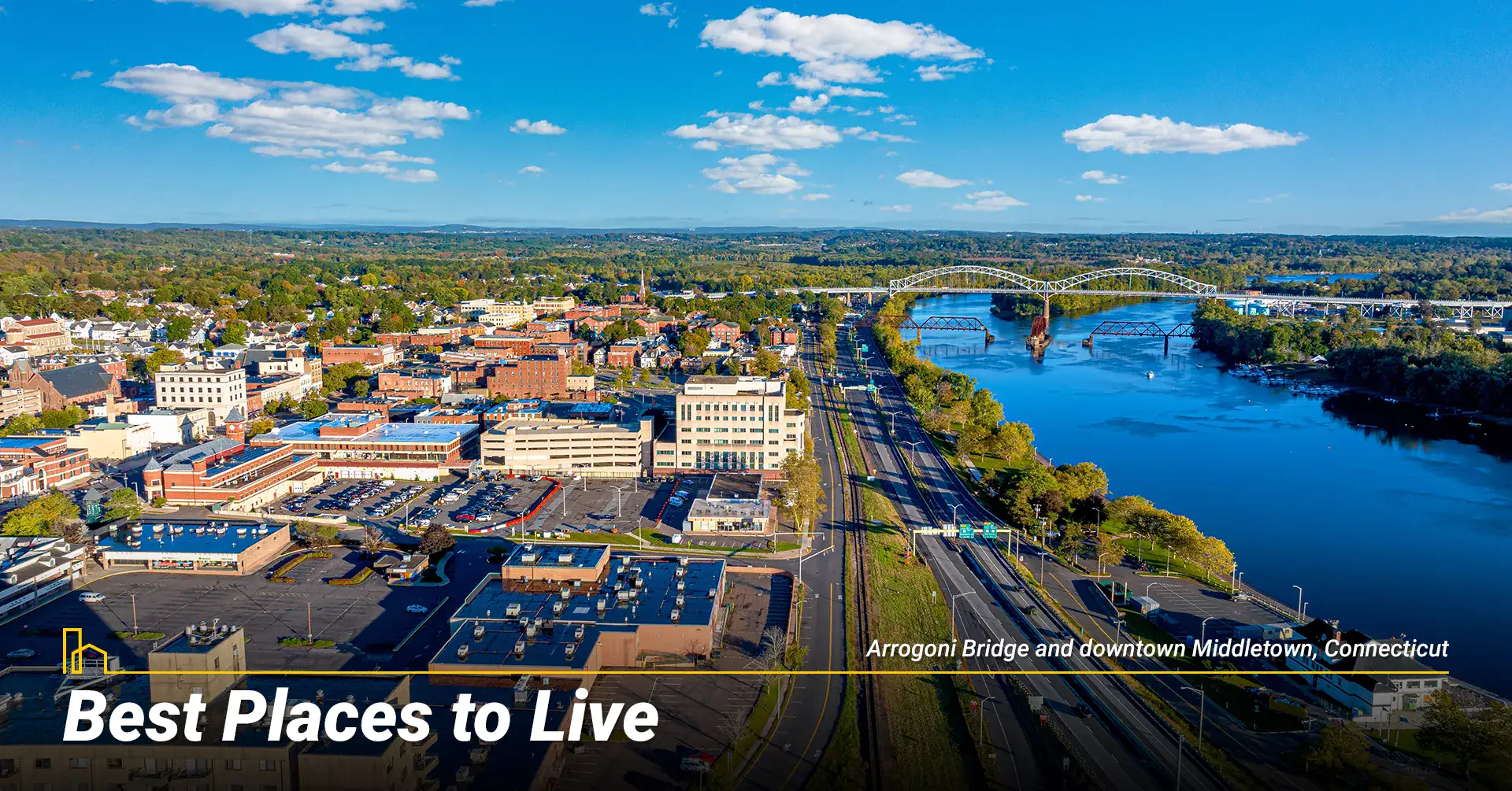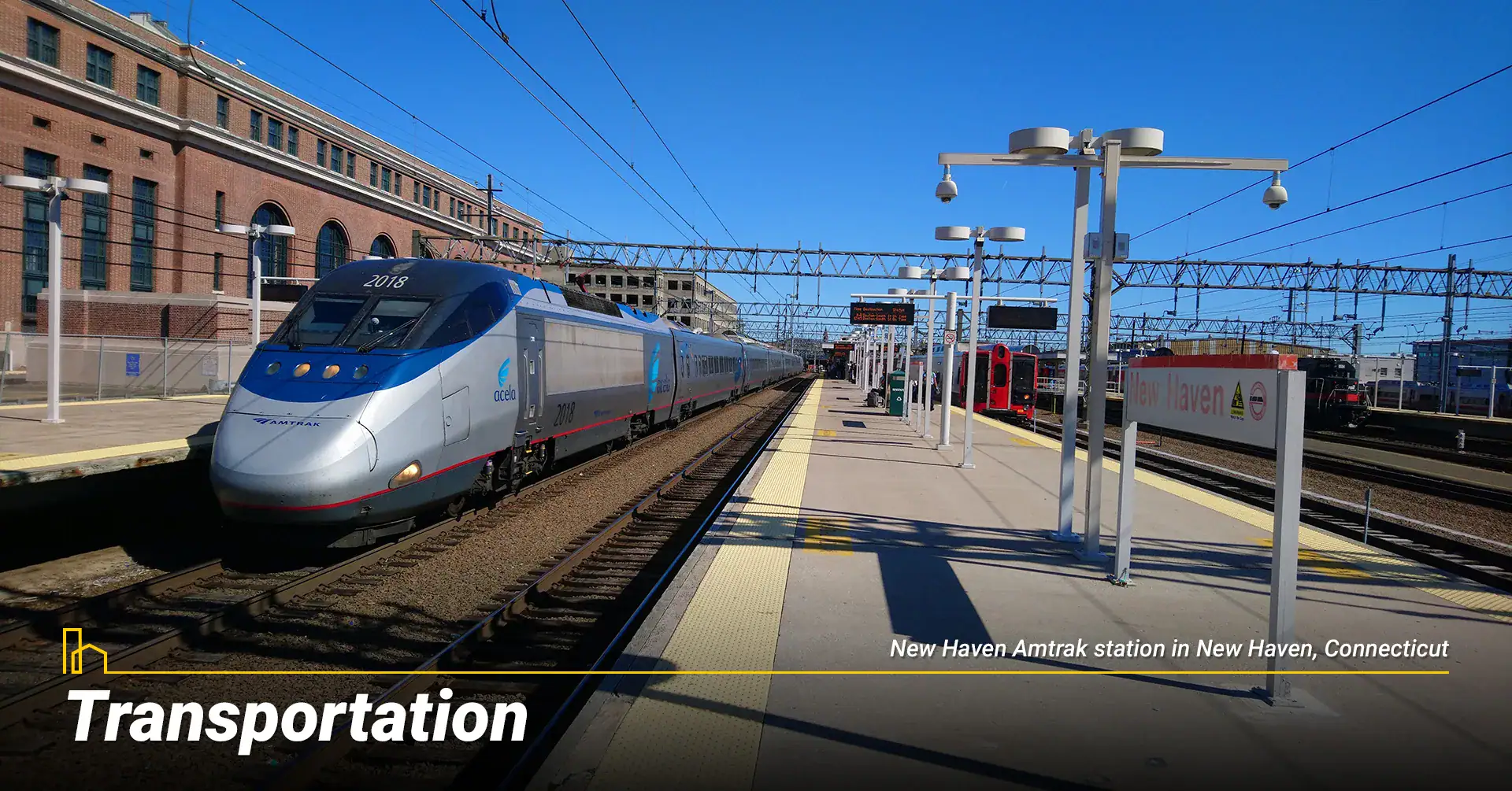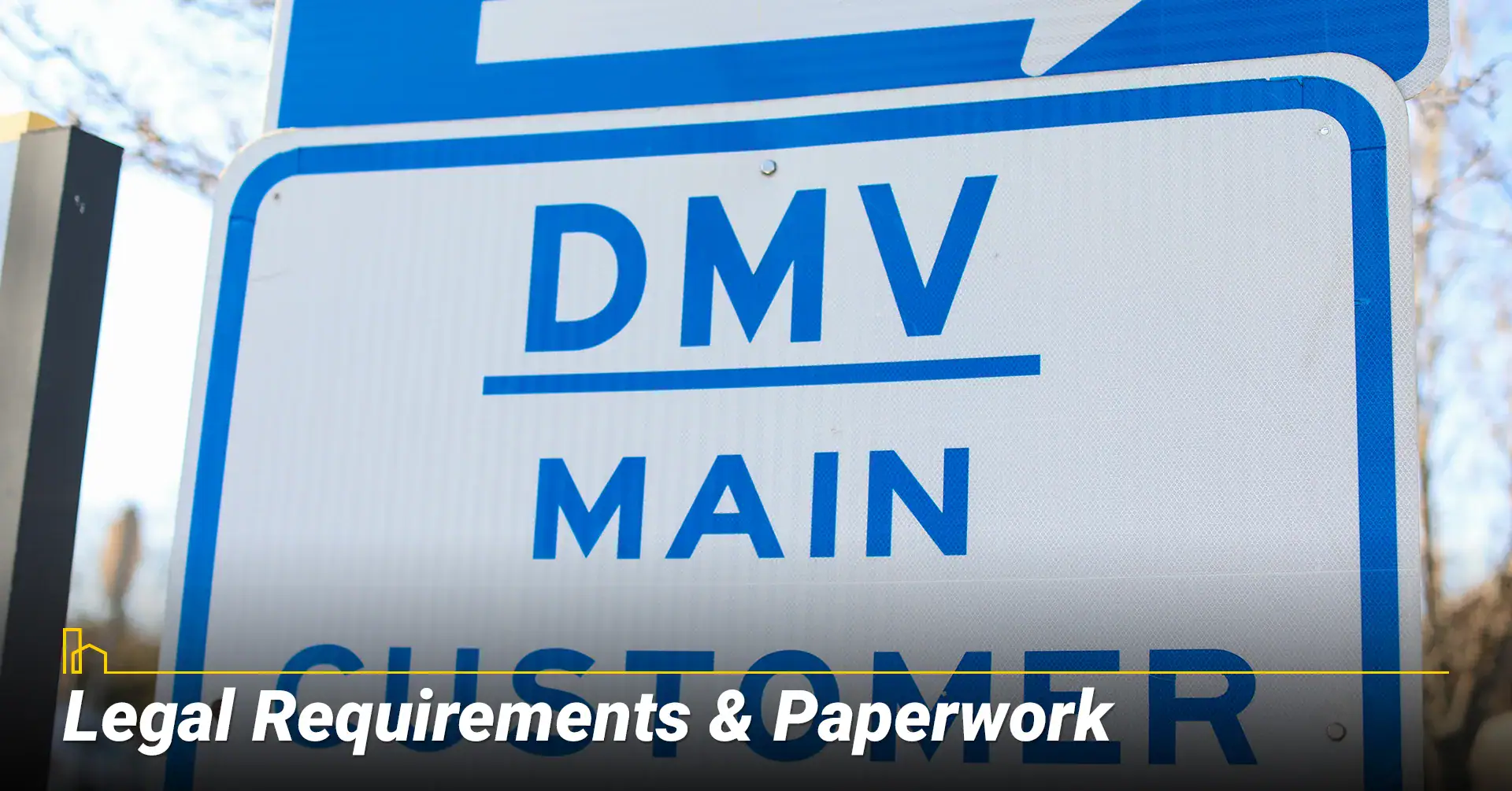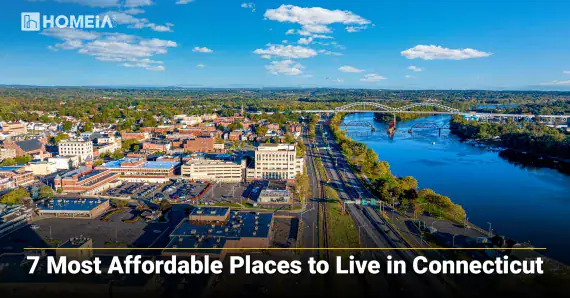Moving to Connecticut: The Complete Relocation Guide & Checklist
- Local Editor:Local Editor: Brian Miller
Published: Oct 20, 2025
- Category: Moving , City Living Guide

Bordered by New York, Massachusetts, and Rhode Island, and home to a stunning coastline along Long Island Sound, Connecticut offers a lifestyle defined by New England charm, historical significance, and modern convenience. About 3.6 million residents call the Constitution State home, drawn by its top-rated schools, safe communities, and its unique position between the major metropolises of Boston and New York City.
Known for its vibrant fall foliage, prestigious universities, and the enchanting suburbs, this state offers much more to newcomers—a diverse economy, a rich cultural tapestry, and a high quality of life. This comprehensive Moving to Connecticut guide covers essential relocation information, from preparing for the distinct seasons and understanding the high costs to navigating the legal requirements of becoming a Connecticut resident.
Key Takeaways
- The High Cost of Living: Connecticut’s overall cost of living is about 25% above the U.S. average. Housing, utilities, and property taxes are significantly more expensive, though higher-than-average salaries in key sectors can help offset costs when working in certain key industries.
- Distinct Four-Season Climate: Prepare for beautiful summers, stunning autumns, and cold, snowy winters. Resilience and preparation for nor’easters are key.
- Diverse Economy: Finance, insurance, advanced manufacturing, healthcare, and biotechnology are the state’s economic pillars, offering high wages, particularly in Fairfield County’s southwestern “Gold Coast.”
- Prime Location & Transportation: Excellent road and rail networks connect residents to New York City and Boston, making Connecticut a prime location for commuters.
- Strong Sense of Community: New England towns are known for their strong identity, community events, and well-maintained public spaces, fostering a high quality of life.
Table of Contents:
- 1. What Is It Really Like to Live in Connecticut?
- 2. Cost of Living & Affordability
- 3. Jobs & Economy
- 4. Education & Schools
- 5. Tax Structure
- 6. Best Places to Live
- 7. Planning Your Move: A Timeline
- 8. Transportation
- 9. Legal Requirements & Paperwork
- 10. Financial Planning
- 11. Insider Tips from Locals
- Frequently Asked Questions About Moving to Connecticut
1. What Is It Really Like to Live in Connecticut?

A. Culture & Lifestyle
Here, the culture uniquely blends historic New England tradition and modern, affluent suburban life. There’s a strong emphasis on education, community involvement, and a deep appreciation for the arts and history. The term “Nutmegger” refers to a Connecticut resident, known for shrewdness and ingenuity. Community events like town fairs, farmers’ markets, and holiday parades are cornerstone activities, providing newcomers with natural opportunities to integrate.
B. Arts, Sports, and Entertainment
Hartford boasts the Bushnell Center for the Performing Arts and the Wadsworth Atheneum, America’s oldest public art museum. The state’s cultural scene also includes the International Festival of Arts & Ideas in New Haven, the Goodspeed Opera House, and countless local galleries. While it lacks major-league sports teams, residents are fervent supporters of the UConn Huskies. For a look at cultural life in another state, you might explore what it’s like to live in Boston, Massachusetts.
C. Food Scene & Nightlife
Connecticut cuisine is famously diverse, from the New Haven-style apizza to buttery, hot lobster rolls served on the shoreline. Fine dining exists in towns like Greenwich and New Haven, while nightlife is centered around upscale bars, breweries, and local pubs. Smaller towns may have a more subdued social scene focused on community gatherings.
D. Outdoor Recreation & Natural Beauty
Outdoor recreation is a key part of life, from the coast to the Litchfield Hills.
- State Parks & Forests: 110 state parks and 32 state forests offer unparalleled hiking, camping, and boating.
- Coastal Activities: Sailing, kayaking, and beach-going along Long Island Sound.
- Winter Sports: Cross-country skiing, snowshoeing, and ice skating.
- Scenic Drives: Particularly breathtaking during the fall foliage season.
E. Climate
Connecticut has a coastal climate:
- Summer (June-August): Warm to hot, with temperatures ranging from 70°F to 85°F, often with high humidity. There are occasional heat waves.
- Autumn (September-November): Widely considered the most beautiful season. Crisp air and spectacular foliage. Temperatures from 45°F to 70°F.
- Winter (December-February): Cold and snowy. Temperatures often range from 20°F to 35°F, and nor’easters can drop significant snow.
- Spring (March-May): Unpredictable, with a mix of rain, cool days, and the gradual emergence of warmer weather.
The Pros and Cons of Living in Connecticut
Nestled in the heart of New England, Connecticut combines historic charm, coastal beauty, and modern sophistication. Known as the Constitution State, it offers easy access to New York City and Boston while maintaining its own distinct character with picturesque towns, excellent schools, and a high standard of living…
2. Cost of Living & Affordability

Connecticut’s affordability is its greatest challenge. Let’s break down the costs.
A. Housing Market
Housing costs vary significantly between the high-cost Gold Coast and more affordable areas in the northeast and central regions.
| Housing Type | Fairfield County | Hartford Area | New Haven Area | Eastern CT |
| Median Home Price | $650,000+ | $285,000 | $340,000 | $260,000 |
| Avg. 2-Bedroom Rent | $2,400+ | $1,400 | $1,600 | $1,250 |
B. Daily Expenses
| Monthly Expense Category | Average Cost | Notes |
| Utilities (Heating Focus) | $250-$450 | Highly seasonal; winter heating costs can be high. |
| Groceries (Family of 4) | $800-$1,000 | Slightly above the national average. |
| Gasoline | ~$3.50/gallon | Prices fluctuate but are often above the U.S. average. |
| Internet | $70-$100 | Competitive market with good speeds in most areas. |
3. Jobs & Economy

Connecticut’s economy is driven by a few key sectors:
- Finance & Insurance: Insurance, finance, and wealth management are the largest industries, centered in Fairfield County and Hartford. These are the most lucrative jobs in Connecticut
- Advanced Manufacturing: A cornerstone of the economy, especially aerospace (Pratt & Whitney, Sikorsky) and submarines.
- Healthcare & Bioscience: Yale New Haven Health, Hartford Healthcare, and a growing biotech sector are the major employers in Connecticut.
- Education: Yale University and the University of Connecticut are important employers in Connecticut.
The 5 Best Places to Live in Connecticut: A City Comparison
Connecticut offers a balance of historic charm, urban sophistication, and coastal beauty, making it a top choice for those seeking both opportunity and quality of life. Choosing the right community is key, as each area offers something unique — from Stamford’s corporate energy to New Haven’s academic prestige…
4. Education & Schools

Connecticut operates some of the highest-achieving public schools in the nation, though quality can vary between affluent suburbs and less wealthy urban districts. Higher education is a crucial component of this state, including Yale University, the University of Connecticut, Trinity College, and Wesleyan University.
5. Tax Structure

Connecticut has a mixed tax reputation.
- State Income Tax: A progressive tax ranging from 3% to 6.99% based upon income.
- State Sales Tax: 6.35% on most goods and services.
- Property Tax: Property taxes are among the highest in the nation. This is a significant cost for homeowners.
- Vehicle Property Tax: An annual personal property tax is levied on all registered vehicles by your town of residence.
7 Most Affordable Places to Live in Connecticut
In a state where costs often climb higher than the national average, finding an affordable places to live in Connecticut can be a rewarding challenge. While housing, utilities, and taxes are known to stretch budgets, several communities offer a balance of value and quality of life. These towns and cities provide access to good schools, job opportunities, and the scenic beauty New England is famous for…
6. Best Places to Live

| City | Key Features | Median Home Price |
| Stamford | Urban amenities, corporate jobs, NYC commute. | $650,000 |
| Hartford | Capital city, insurance jobs, history, culture. | $285,000 |
| New Haven | Ivy League university, vibrant arts, famous pizza. | $340,000 |
| Middletown | Central riverfront location, college town vibe. | $295,000 |
| Greenwich | Affluent suburbs, top schools, NYC proximity. | $1.8M+ |
7. Planning Your Move: A Timeline

A successful move to Connecticut requires meticulous planning.
| Timeline | Essential Tasks | Important Details |
| 8-12 Weeks Before | Research communities. Start job search. Begin purging belongings. | The cost of living is high. Create a detailed budget. Network online via LinkedIn and regional job boards. |
| 6-8 Weeks Before | Secure housing. Plan your move. Research school districts, if applicable. | Hiring a reputable moving company is advised. If driving a rental truck, be prepared for tolls and traffic. |
| 4-6 Weeks Before | Arrange utility connections. Schedule address change. | Prepare utilities that are necessary for your new home. Contact your new town’s tax assessor to understand the vehicle tax procedure. |
| 2-4 Weeks Before | Have a winter emergency kit for your car and home. | Have additional supplies ready for your new home. Such as a snow shovel, ice melt, and supplies for potential power outages. |
| 1-2 Weeks Before | Confirm all moving details. | Confirm moving company; prepare essentials boxes; clean current home |
| After Arrival | Establish residency. Register the vehicle. Get a Connecticut driver’s license. | You have 90 days to register your vehicle and get a new license. Register with the local school system. |
=> Get the Relocation Guide & Checklist PDF — prepared for both Desktop and Mobile devices.
Recommended for you
8. Transportation

- Driving: I-95, I-91, and I-84 are the major arteries. Traffic congestion is significant on I-95 in Fairfield County during rush hours.
- Rail: Metro-North Railroad provides essential commuter service from New Haven and Fairfield Counties into New York City. The Hartford Line connects New Haven to Springfield, MA.
- Flying: Major airports include Bradley International Airport (BDL) near Hartford and Tweed New Haven Airport (HVN).
- Winter Driving: Winter tires are recommended, and all-season tires are a must. Keep a snow brush and ice scraper in your car.
9. Legal Requirements & Paperwork

New residents must complete several tasks:
- Vehicle Registration: Required within 90 days of establishing residency. You will need proof of insurance, a title, and a VIN verification.
- Driver’s License: Required within 90 days. You must surrender your out-of-state license.
- Residency: To qualify as a resident, register to vote, get a CT driver’s license, or spend more than 183 days per year in the state.
- Vehicle Property Tax: Be prepared to pay an annual tax bill from your town for each vehicle you own.
10 Important Things You Should Prepare for Long-Distance Moving
Moving long distances can be exciting, like an adventure of a lifetime. There is nothing as interesting and energizing as trying out new things and having the opportunity for a fresh start. But let’s be honest: moving is more complex than getting into a car or a bus and leaving for a new place…
10. Financial Planning

Create a realistic budget that accounts for high relocation expenses, a large emergency fund (6-9 months) because of the high cost of living, and significant housing costs. Aim to keep housing costs (mortgage/rent, taxes, insurance) below 30% of your gross income.
11. Insider Tips from Locals

- Embrace Layers: The key to staying comfortable in Connecticut’s changing weather is wearing layers of clothing.
- Get Outside in Every Season: Investing in gear for all seasons is crucial for mental and physical health. Enjoy the beaches in summer and the trails in fall.
- Shop the “Transfer Stations”: Many towns have a dump or “transfer station” where residents can often pick up free compost, mulch, and sometimes even discard usable items.
- Learn the Pizza Lingo: In New Haven, it’s called “apizza,” cooked in a coal-fired oven. Ordering a “plain” pizza comes with just tomato sauce and a dusting of grated pecorino romano cheese, which does not include mozzarella unless you ask for it.
- Be Patient with the Pace: Things can move at a more measured, traditional pace in smaller towns. Embrace the “New England reserve” of your neighbors.
Conclusion
Moving to the Constitution State goes beyond a change of address; it’s an investment in a high-quality lifestyle. It demands financial planning, adaptability to the seasons, and a spirit of community engagement. The rewards, however, are significant: excellent schools, beautiful landscapes, rich history, and the pride of building a life in one of the nation’s most desirable regions. With thorough preparation and realistic expectations, your relocation to Connecticut can be the start of a rewarding new chapter. For those still considering options, our guide on moving to Massachusetts might provide an interesting comparison.
Recommended for you
Frequently Asked Questions About Moving to Connecticut
1. What is the first step to moving to Connecticut?
The first step is to secure a job and understand your living expenses, given the high cost of living. Start researching towns that fit your budget and lifestyle needs.
2. Should I rent or buy when I first move to Connecticut?
Given the high transaction costs of buying (property taxes, closing costs), it is often wise to rent for the first year. This allows you to get a feel for different towns and neighborhoods before making a long-term financial commitment.
3. How do I get my belongings to Connecticut?
For a full-service move, using a national or reputable regional moving company is common. For a more budget-friendly option, renting a truck or using a portable container service like PODS can be effective.
4. What should I pack vs. buy there?
Bring all essential documents, specialized gear, and a full range of clothing for all seasons. Everyday household items, furniture, and bulky goods can be purchased here, though prices may be higher than you’re used to.
5. Is it hard to make friends in Connecticut?
It can be, due to the “New England reserve” and the fact that many social circles are long-established. The best way to meet people is to get involved in local community groups, recreational sports leagues, volunteer organizations, or through your children’s school activities. Persistence and a friendly demeanor are key.
Table of Contents:
- 1. What Is It Really Like to Live in Connecticut?
- 2. Cost of Living & Affordability
- 3. Jobs & Economy
- 4. Education & Schools
- 5. Tax Structure
- 6. Best Places to Live
- 7. Planning Your Move: A Timeline
- 8. Transportation
- 9. Legal Requirements & Paperwork
- 10. Financial Planning
- 11. Insider Tips from Locals
- Frequently Asked Questions About Moving to Connecticut
Brian Miller lives in Connecticut. He is a Product Manager with over 10 years of experience leading product development in technology and financial services. He specializes in defining product vision, aligning cross-functional teams, and using data-driven insights to create scalable, user-focused solutions. Brian has led initiatives that improved platform performance, increased adoption, and enhanced user experience across global markets. With an MBA in Product Strategy and a background in Finance, he bridges business goals with technical execution to deliver measurable results. He brings strategic thinking, analytical precision, and creativity to every project.
HOMEiA is a city guide site where visitors can find detailed information about communities of interest. HOMEiA’s City Guides, created in partnership with local writers and editors, are curated lists of the best, safest, and most affordable places to live. The guides feature the HOMEiA Score, a proprietary index that rates communities on such factors as housing costs, education, employment, etc.
HOMEiA.com aims to be the premier site for people planning to relocate, providing them with insightful content and connecting them with skilled real estate professionals.
We also empower real estate professionals to establish or strengthen their web presence by highlighting their experience, knowledge and achievements. If you’re selected to join our list of certified real estate professionals, you will distinguish yourself from your peers — and earn HOMEiA’s support.
If you believe in HOMEiA’s mission, please share our website with others.
Table of Contents:
- 1. What Is It Really Like to Live in Connecticut?
- 2. Cost of Living & Affordability
- 3. Jobs & Economy
- 4. Education & Schools
- 5. Tax Structure
- 6. Best Places to Live
- 7. Planning Your Move: A Timeline
- 8. Transportation
- 9. Legal Requirements & Paperwork
- 10. Financial Planning
- 11. Insider Tips from Locals
- Frequently Asked Questions About Moving to Connecticut













































































































































